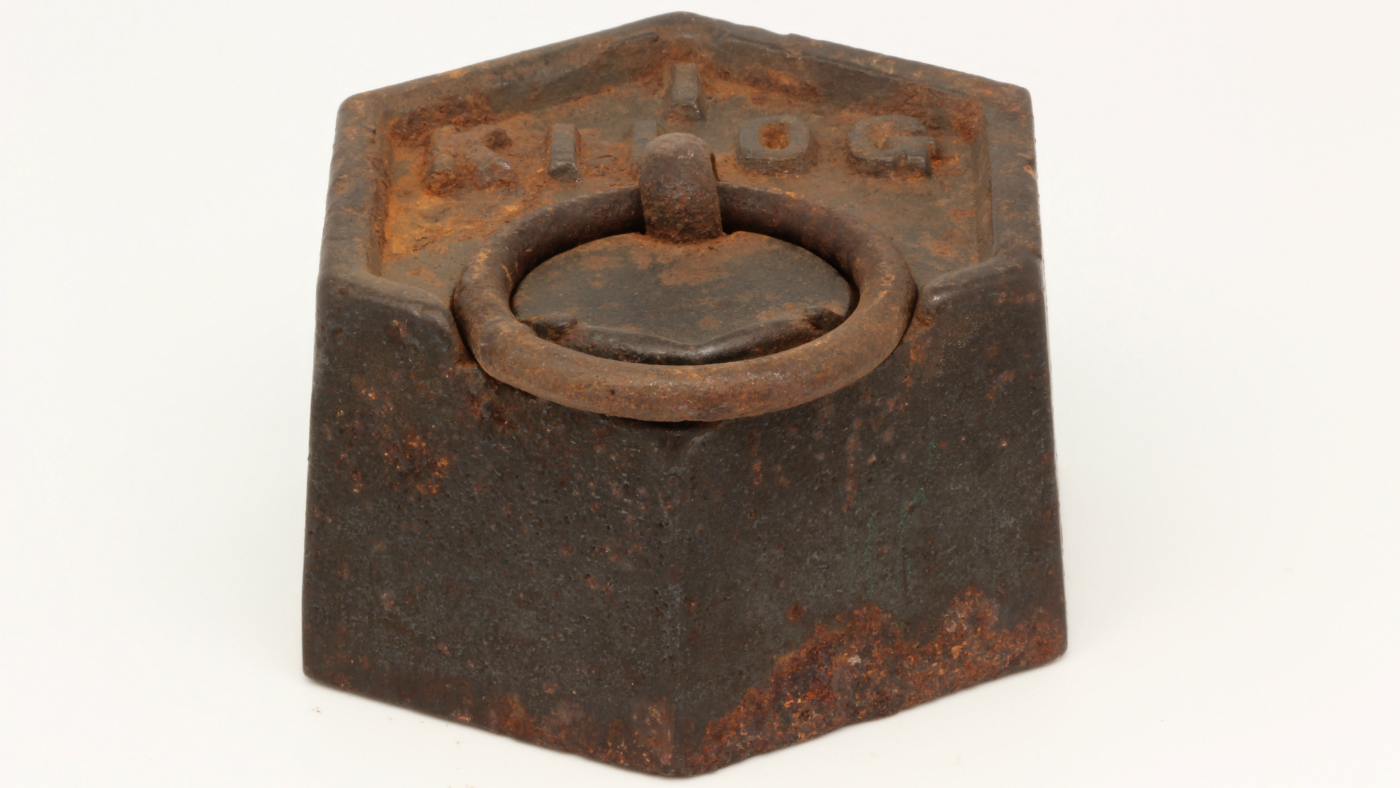Scientists to update definition of the kilogram
The unit of mass is currently defined by a lump of metal stored in France

Scientists are preparing to officially update the definition of a kilogram after using an old metal prototype as the global reference for almost 130 years.
Since 1889, the exact mass of one kilogram has been based on an object known as Le Grand K, a cylinder of platinum and iridium, which sits under three glass bell jars in a locked vault outside Paris.
But this Friday the international General Conference on Weights and Measures will convene in Versailles, France, to hold a vote on whether to adopt a new definition.
The Week
Escape your echo chamber. Get the facts behind the news, plus analysis from multiple perspectives.

Sign up for The Week's Free Newsletters
From our morning news briefing to a weekly Good News Newsletter, get the best of The Week delivered directly to your inbox.
From our morning news briefing to a weekly Good News Newsletter, get the best of The Week delivered directly to your inbox.
According to the National Public Radio (NPR) new site, the decision is expected to be unanimous and “a mere formality after years of work”.
“Going forward, the world's system of mass measurement will not be based on some special hunk of metal, but rather on unalterable features of the universe,” adds the Washington DC-based broadcaster.
Zeina Kubarych, of the National Institute of Standards and Technology (NIST) in Maryland, says: “It’s history in the making. We’re changing a mass realization system that we’ve had for 129 years. It’s a huge event.”
So what exactly will change and why does it matter?
A free daily email with the biggest news stories of the day – and the best features from TheWeek.com
What is a kilogram?
According to Reuters, all modern mass measurements are traceable back to Le Grand K, “from micrograms of pharmaceutical medicines to kilos of apples and pears and tonnes of steel or cement”. The metal cylinder is officially known as the “international prototype kilogram”.
However, despite being stored under glass and regularly cleaned, Le Grand K can pick up dust and dirt, and its weight can be affected by the atmosphere. This means it is not a constant weight.
“We live in a modern world. There are pollutants in the atmosphere that can stick to the mass,” explains Ian Robinson, a specialist in the engineering, materials and electrical science department at Britain’s National Physical Laboratory.
“So when you just get it out of the vault, it’s slightly dirty. But the whole process of cleaning or handling or using the mass can change its mass. So it’s not the best way, perhaps, of defining mass.”
As a result, scientists have been looking for a standard that will remain more constant.
How is the kilogram being changed?
The standard definitions of a number of measurements have been updated in recent decades, using digital technology to determine the size, weight and length of certain units.
For example, the metre was originally described as one ten-millionth of the distance from the North Pole to the equator, and was defined by a metal bar, also kept in France. But in the 1980s, scientists redefined the metre as the distance that light can travel through a vacuum in about one 300-millionth of a second.
“The kilogram makeover will derive mass from the Planck constant, a number deeply rooted in the quantum world,” explains The Guardian.
Scientists will first use an ultra-sensitive piece of equipment called a Kibble balance to calculate Planck’s constant from a kilogram reference mass.
“The instrument is similar to a scales, but instead of counteracting one weight with another, the object being weighed is balanced by electromagnetic forces,” the newspaper continues. “Planck’s constant is proportional to the energy needed to balance the mass. Then, armed with a precise value for Planck’s constant, researchers can do the reverse, and use the balance to measure unknown masses.”
NIST insists that in order to define a standard weight, “at least three experiments must produce measurements with a relative standard uncertainty of no more than 50 parts per billion, with at least one of those measurements having an uncertainty of no more than 20 parts per billion”, and “all these values must agree within a statistical confidence level of 95%”.
However, while the the extra accuracy will be a boon to scientists, the average consumer buying kilograms of flour, bananas or the like is unlikely to notice any difference.
-
 Political cartoons for January 4
Political cartoons for January 4Cartoons Sunday's political cartoons include a resolution to learn a new language, and new names in Hades and on battleships
-
 The ultimate films of 2025 by genre
The ultimate films of 2025 by genreThe Week Recommends From comedies to thrillers, documentaries to animations, 2025 featured some unforgettable film moments
-
 Political cartoons for January 3
Political cartoons for January 3Cartoons Saturday's political cartoons include citizen journalists, self-reflective AI, and Donald Trump's transparency